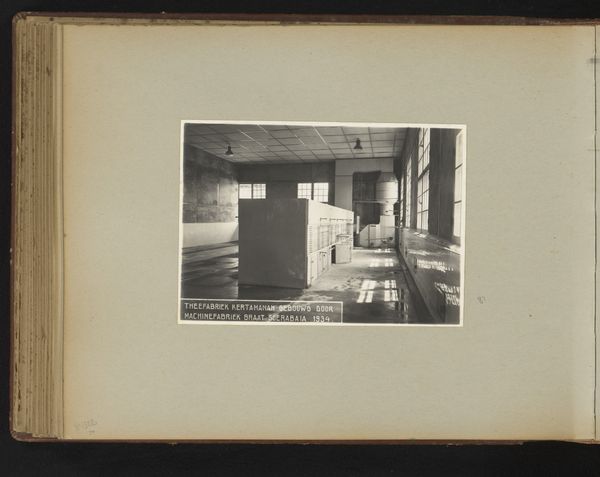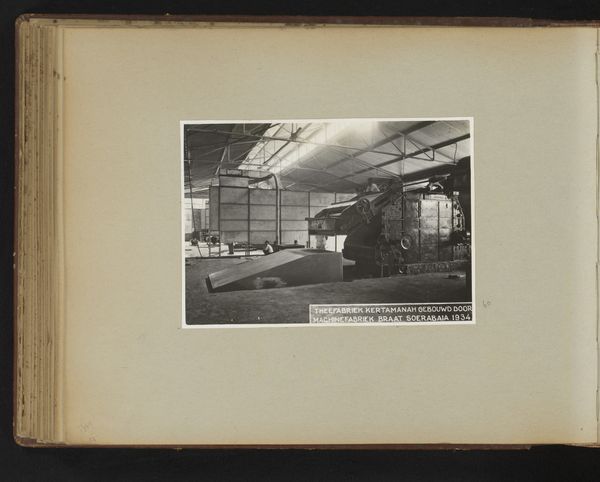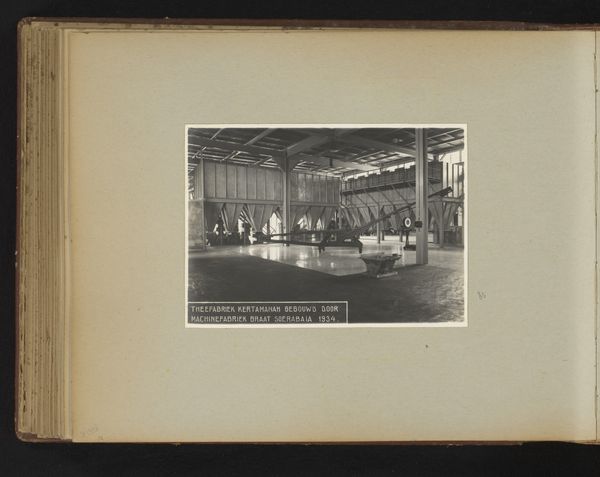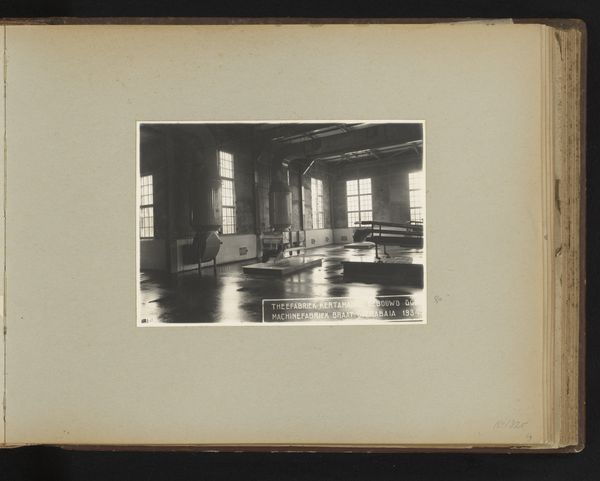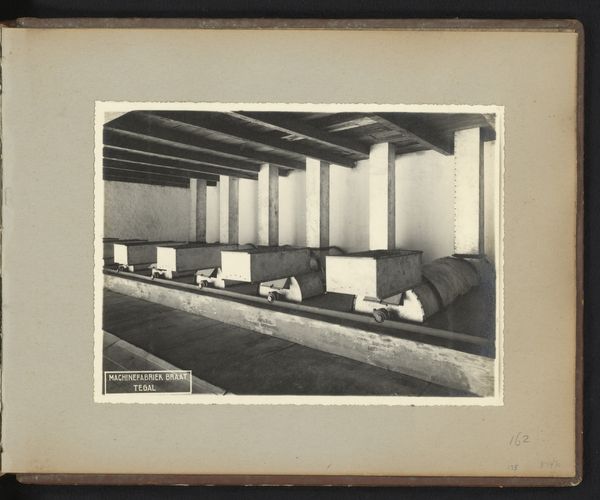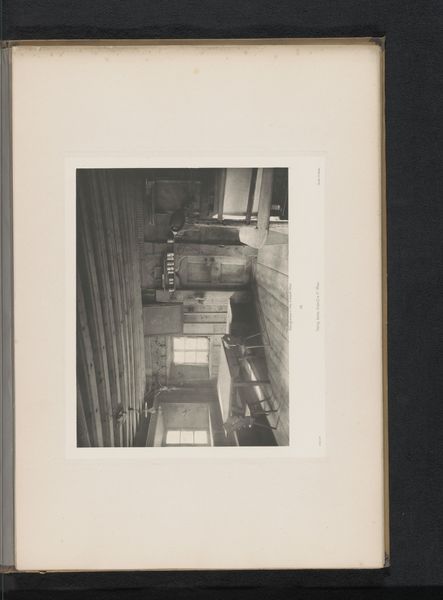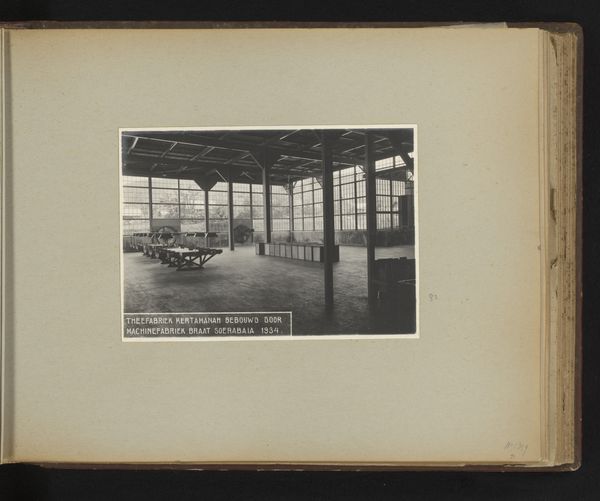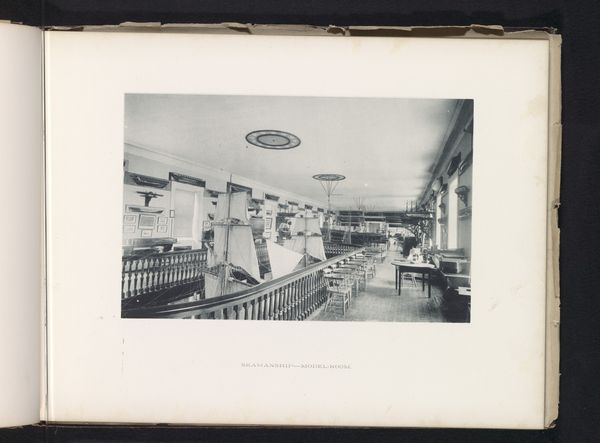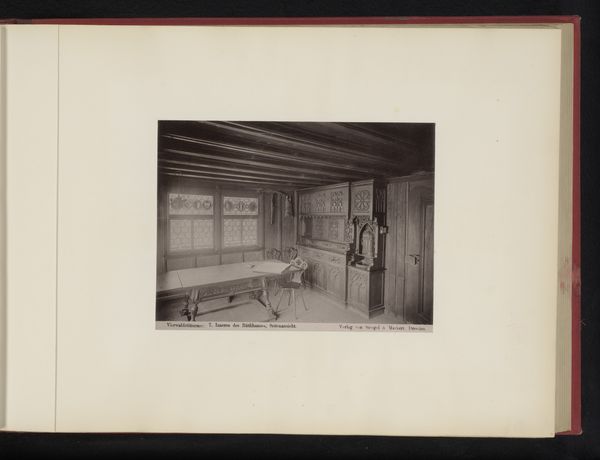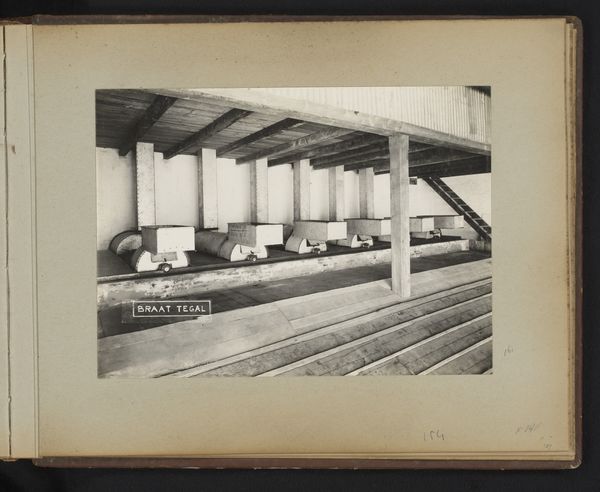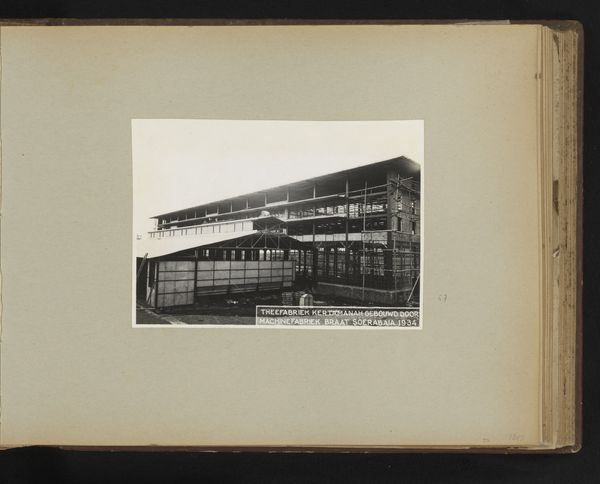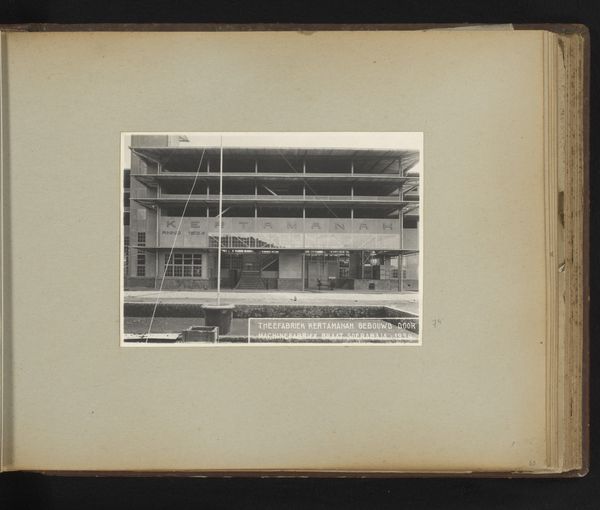
Theefabriek Kertamanah gebouwd door Machinefabriek Braat Soerabaia 1934 1934
0:00
0:00
anonymous
Rijksmuseum
photography
#
ink paper printed
#
landscape
#
photography
#
modernism
Dimensions: height 123 mm, width 172 mm, height 250 mm, width 320 mm
Copyright: Rijks Museum: Open Domain
Curator: This black and white photograph from 1934, held at the Rijksmuseum, documents the Theefabriek Kertamanah. The label tells us it was built by Machinefabriek Braat Soerabaia. It seems to be an image taken inside the factory itself. Editor: Stark, industrial, yet there's something calming about the repetition of elements. All those lockers, the rhythmic support beams. What symbols of productivity are captured in this seemingly still shot? Curator: The factory itself stands as a symbol, of course. It reflects Dutch colonial presence and industrial ambition in what was then the Dutch East Indies. The date is significant, during a period of global economic depression but also rising nationalist movements. Editor: You're right. Those lockers—they almost have a sepulchral feel, like stacked coffins. This repetitive structure amplifies a message of soulless production. I wonder about the people behind this technology and the purpose it held for them. What meanings were buried? Curator: Indeed. Machinefabriek Braat was a Dutch company based in Surabaya, now Indonesia. This image speaks volumes about power structures and engineering marvels. You feel the attempt to create progress that often displaced populations, both geographically and economically. Editor: Interesting thought. This image reveals the iconography of modernity in an exotic setting. The gears themselves – so central in industrial design – represent control and force, particularly when introduced into landscapes previously without that technological imposition. Even more interesting is considering what cultural understanding would be in collision, for people brought into it, either working, or competing with it for traditional employment. Curator: It's a stark depiction of industrialization imposed within a colonial landscape. How economic systems impacted cultural ones. Editor: Absolutely. It’s fascinating to examine the legacy of such progress, to understand its reverberations across different histories. Curator: I'd say looking closer here opens avenues for reflection on progress, industrialism, and representation within our colonial past. Editor: Yes, quite evocative once you attune your perception.
Comments
No comments
Be the first to comment and join the conversation on the ultimate creative platform.

